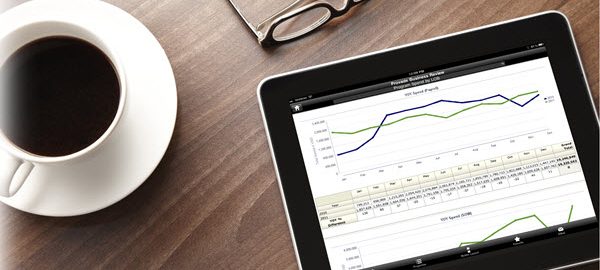By now, most of us have accepted the fact that social media is a major factor when it comes to successful marketing, but many don’t know how to get started. More importantly, how can we ensure that our efforts on social media are tactical, and that we’re not just randomly marketing which is a far less effective way to go. To be successful in social media, you need to have a strategy in place that includes high level goals and objectives, in addition to specific and effective action items. Simply put, you need a good social media measurement plan.

What Exactly is a Social Media Measurement Plan?
In a nutshell, a social media measurement plan contains timely information that translates your top business objectives and goals into dimensions and metrics that you can measure. It also plays a vital part of your overall digital marketing strategy. Together they identify how your digital channels ideally work together to achieve your KPIs (key performance indicators).
Creating a Social Media Measurement Plan
An important thing to consider is exactly who should be involved in setting up your measurement framework along with its implementation. The following primary skill sets will be required in order to create an effective plan.
• An individual who is aware of your business objectives and marketing approaches
• Someone who is knowledgeable about web analytics and understands exactly what it can do
• Someone who has the technical expertise required to set up a custom tracking system
Identify Goals
The first step in the social media measurement planning stage is to identify your goals. It’s important to recognize that your goals will more than likely differ on each social platform, like Facebook, Twitter, Google+, LinkedIn, Pinterest, etc. For instance, if you’re endeavoring to reach a female target market and your company translates well into images and pictures, you’ll want to consider using Pinterest. If you’re a B2B brand marketing an upcoming event, consider LinkedIn. That said, LinkedIn has really broadened its range – it’s not just a place to make business acquaintances and find a job anymore. It’s a great social site for offering products and services as well and even showcase real estate these days.
Identify Objective Strategies
Identify strategies that will help you achieve objectives and identify the KPIs for all of your objectives (some will have several KPIs). For example, if your objective is driving revenue, key strategies to increase revenue could be to up the average value of the order, increase sales, reduce returns all that form KPIs in turn. You’ll still need to put a measurable end result in place in addition to a timeframe to follow in order to achieve both your objectives and goals.
Measure Reach and Share of Conversation
Social media makes it easy for you to share information regarding your brand online and also provides the opportunity to measure the effectiveness of related conversations. “Social reach” looks at the potential number of those that could actually see your posts/campaign. One of the most important things to keep in mind is that it’s not the real number, it only tells you how far your post could actually spread.

Listen
Unfortunately, listening is one of the most often overlooked benefits of using of social media – it’s actually one of its most important. If you’re haven’t been listening to your followers/potential and current clients, you’re missing the whole point of social media.
Measure Conversions and Sales
Measuring social media isn’t about the total number of visitors that see your content. It’s about the actions that they take. When it comes to social media it is a lot easier to get them into your system as a lead and then turn them into a sale. Because of the relationship building nature of social media the odds are higher that you’ll sell them once they are already a devoted fan, reading your blog or newsletter than just posting something on social media and expecting them to buy. Measure the actions that your target audience is taking on all channels, from your blog to Facebook, etc., and determine how each channel fares when it comes to visitors taking action via the conversion rates and sales.

To Measure Overall Social Media ROI
When you are aware of where your leads came from and what they decide to buy, you’ll be able to measure your social media ROI. If you discover a significant amount of your leads come from Facebook and that they frequently convert to sales over time it makes sense to invest your resources there. On the other hand, if you get a good number of leads from YouTube, but they usually don’t covert, it’s time to consider changing your tactics there. If you invest any marketing money in social advertising you’ll be able to tell exactly how much business the ads earned you over time – a handy perk. Clearly, measuring your social media ROI is important because it helps ensure that you don’t waste your money.
Frequency
This step isn’t always talked about when it comes to developing a social media measurement plan, but it should be. Why? Because consumers need to see your content repeatedly, depending on your reference. That said, content that your target audience considers valuable is far less annoying than content with little or no value. Another thing you’ll need to know is that the number of posts you post a day is very different from the frequency of a single post. The number of posts, if it’s targeted and well written, will help you build brand awareness, while the frequency of a presented message actually reinforces the message. Both targeted posts and messages are important.
Experience is Key
Last but certainly not least, be sure that whoever you have handling your social media measurement plan has experience. Nothing can replace the value of having a trained analyst delving into the process. No analytics tool or strategies can replace experience and someone who continually keeps up with the latest social trends and best practices.
Ultimately, the best approach may differ from brand to brand or person to person. What’s important is that you measure your success and link your social media success to more substantial business goals.
Supercharge Your Lead Generation Efforts w/ 10 Simple Tips!
Digital & Social Articles on Business 2 Community(37)






